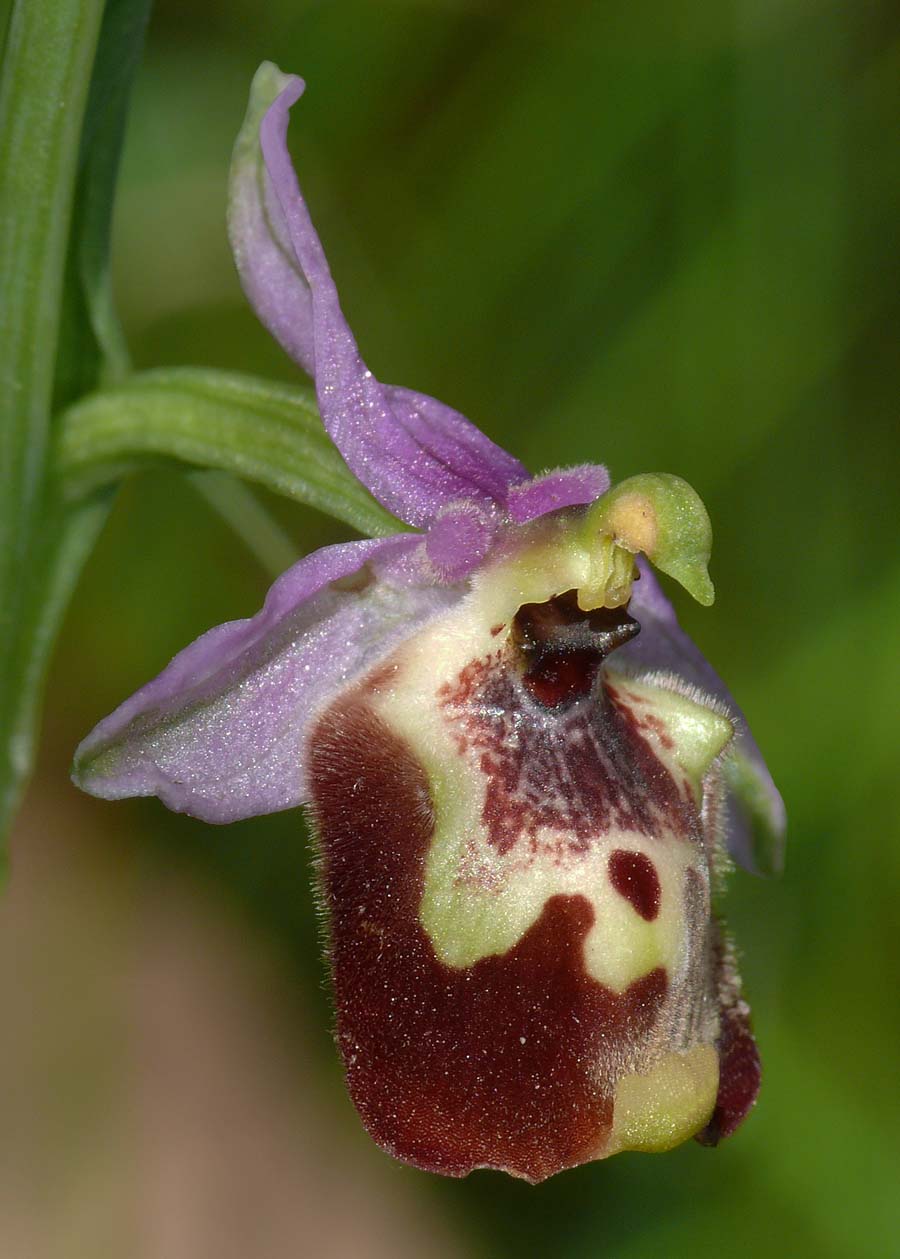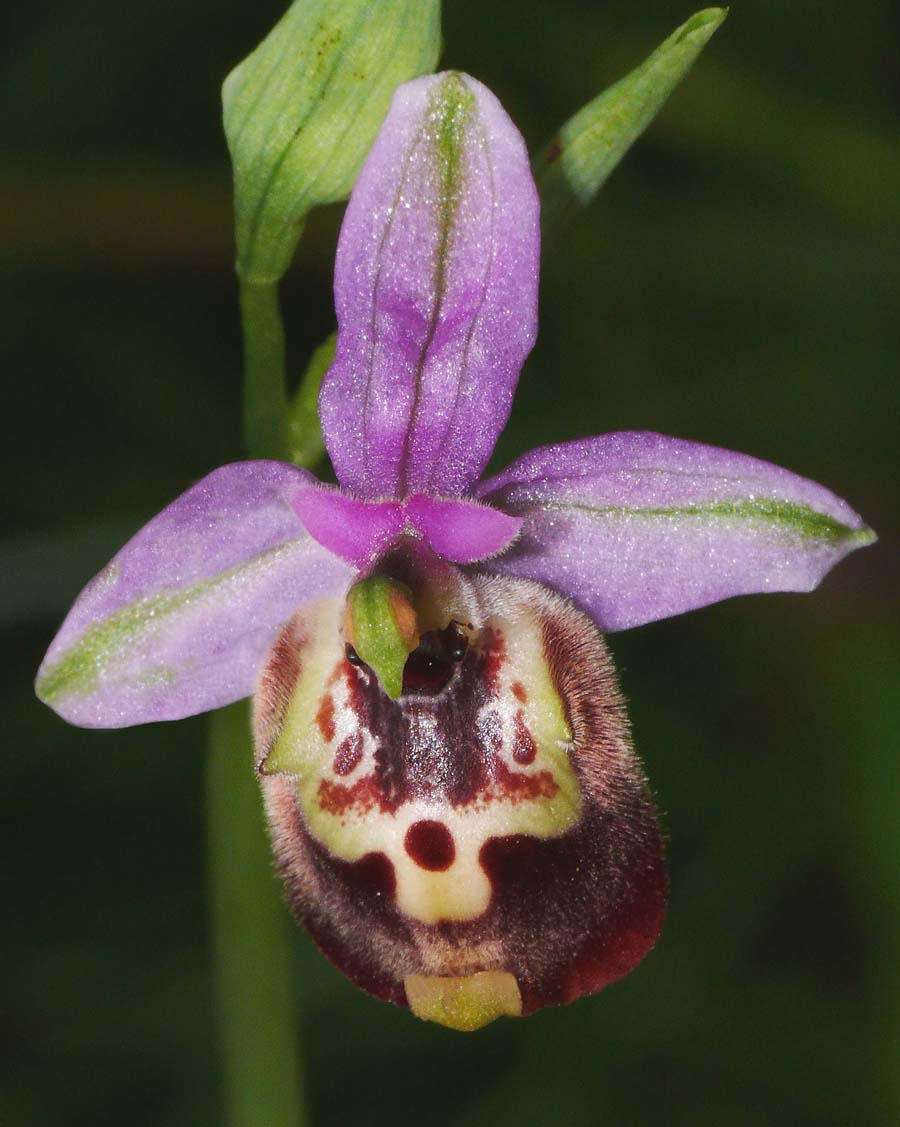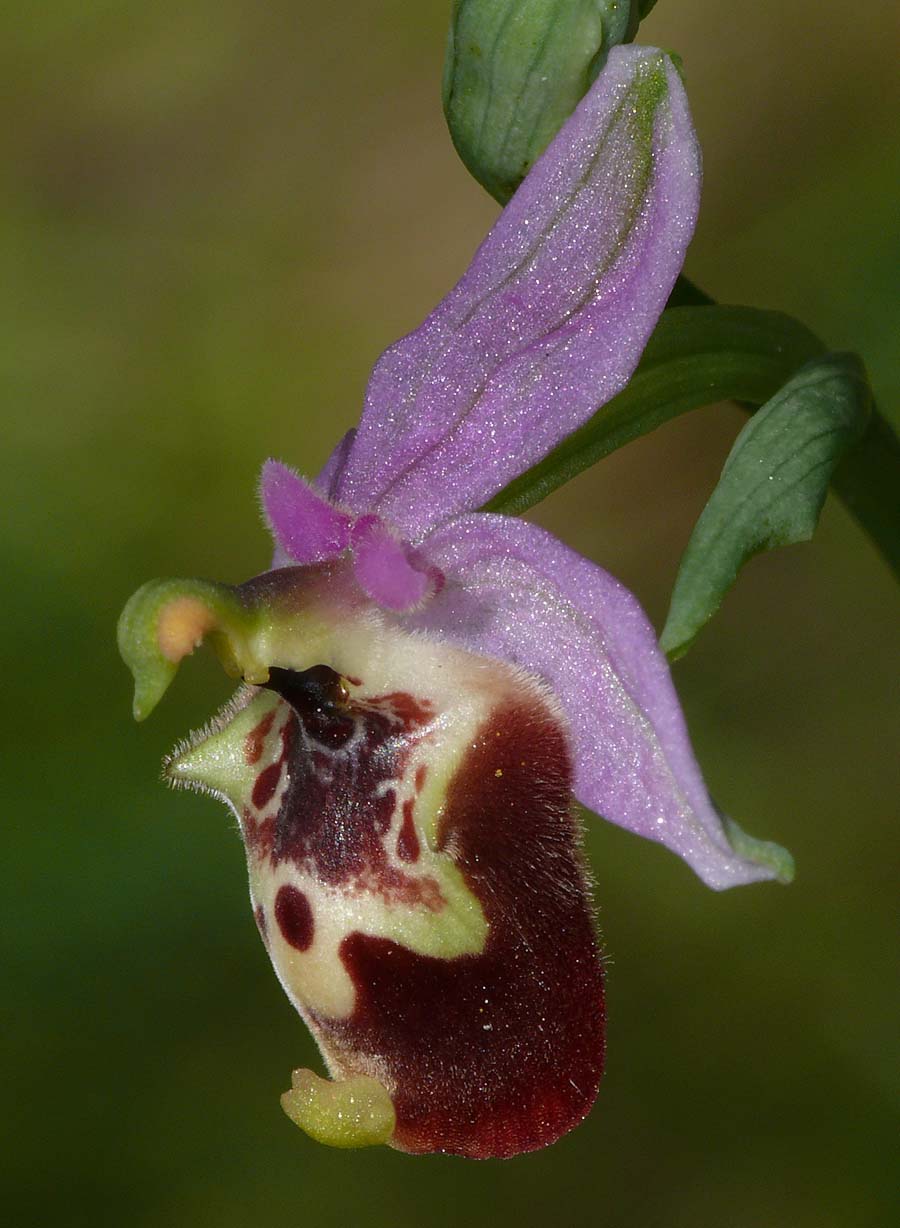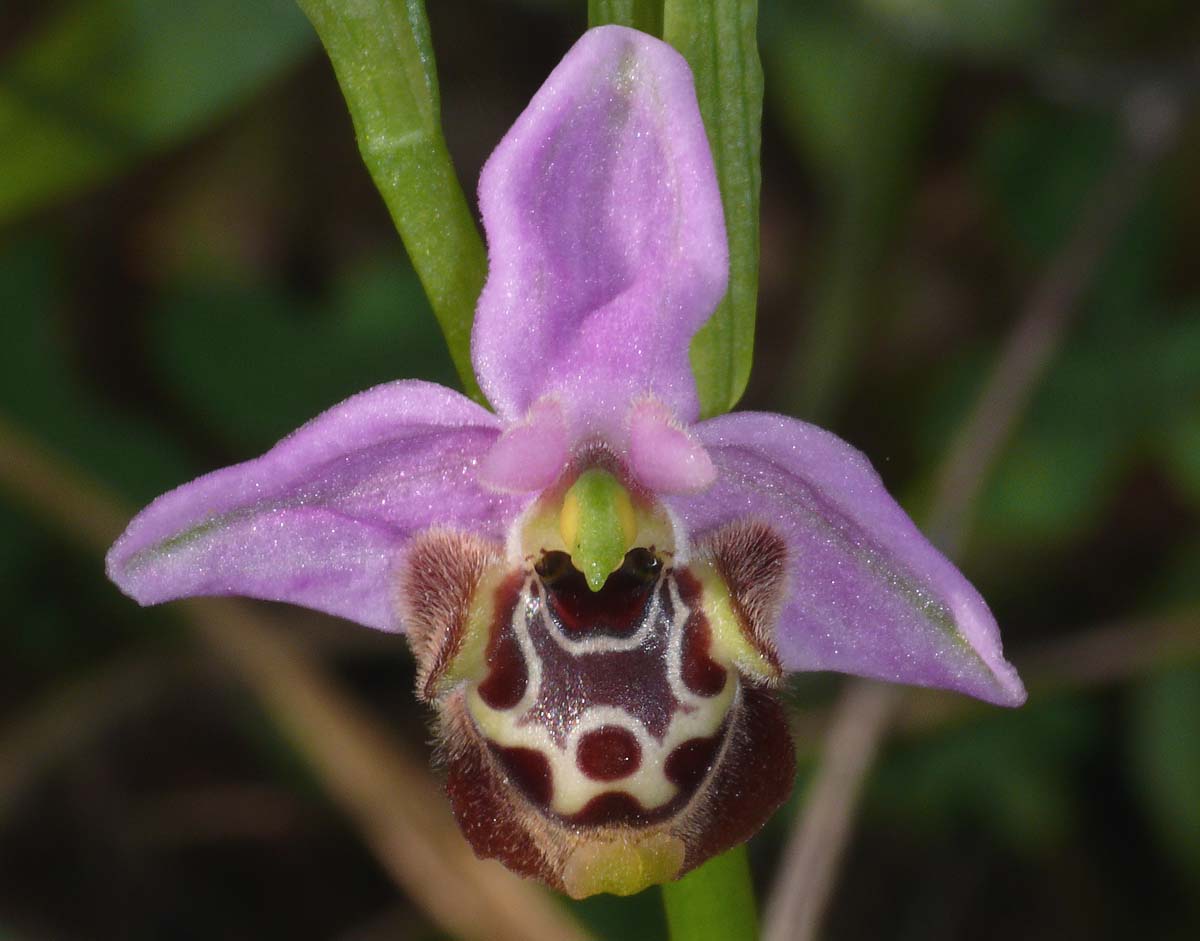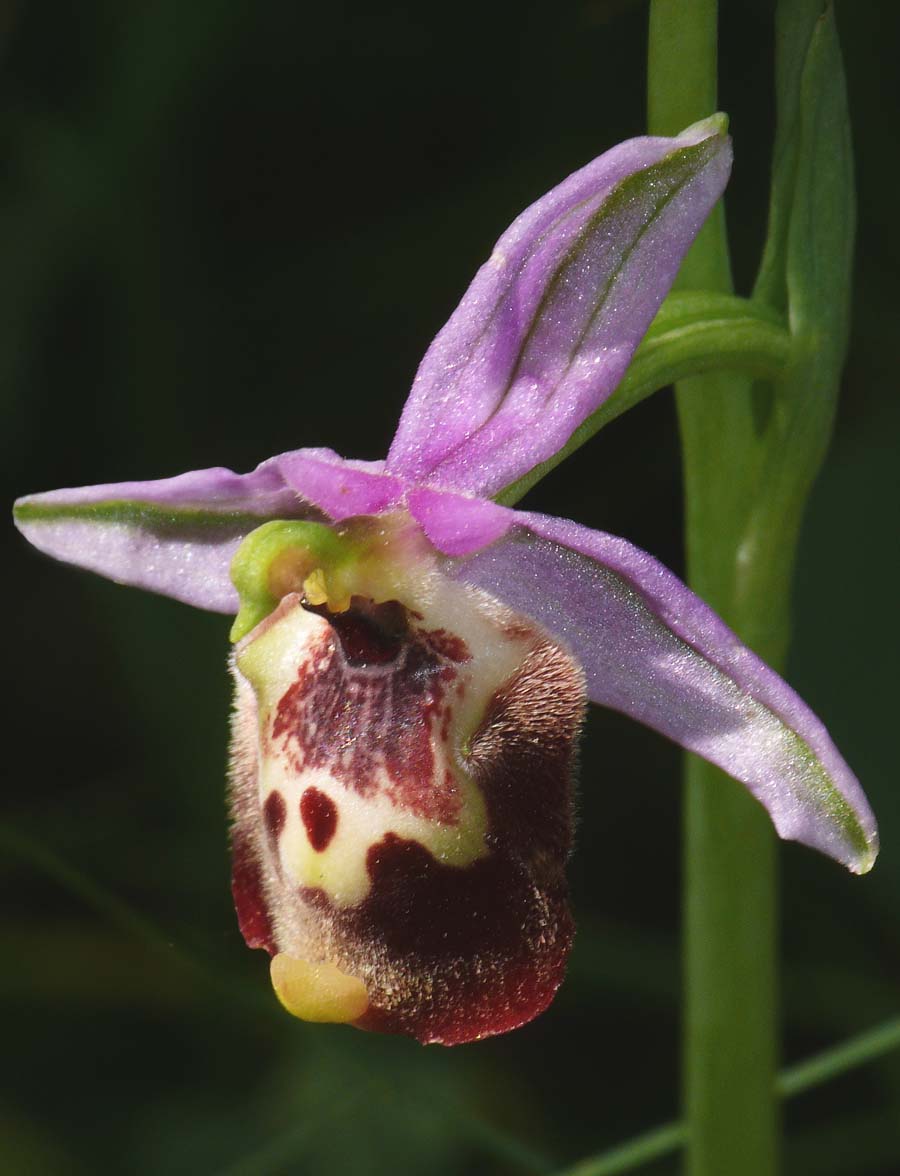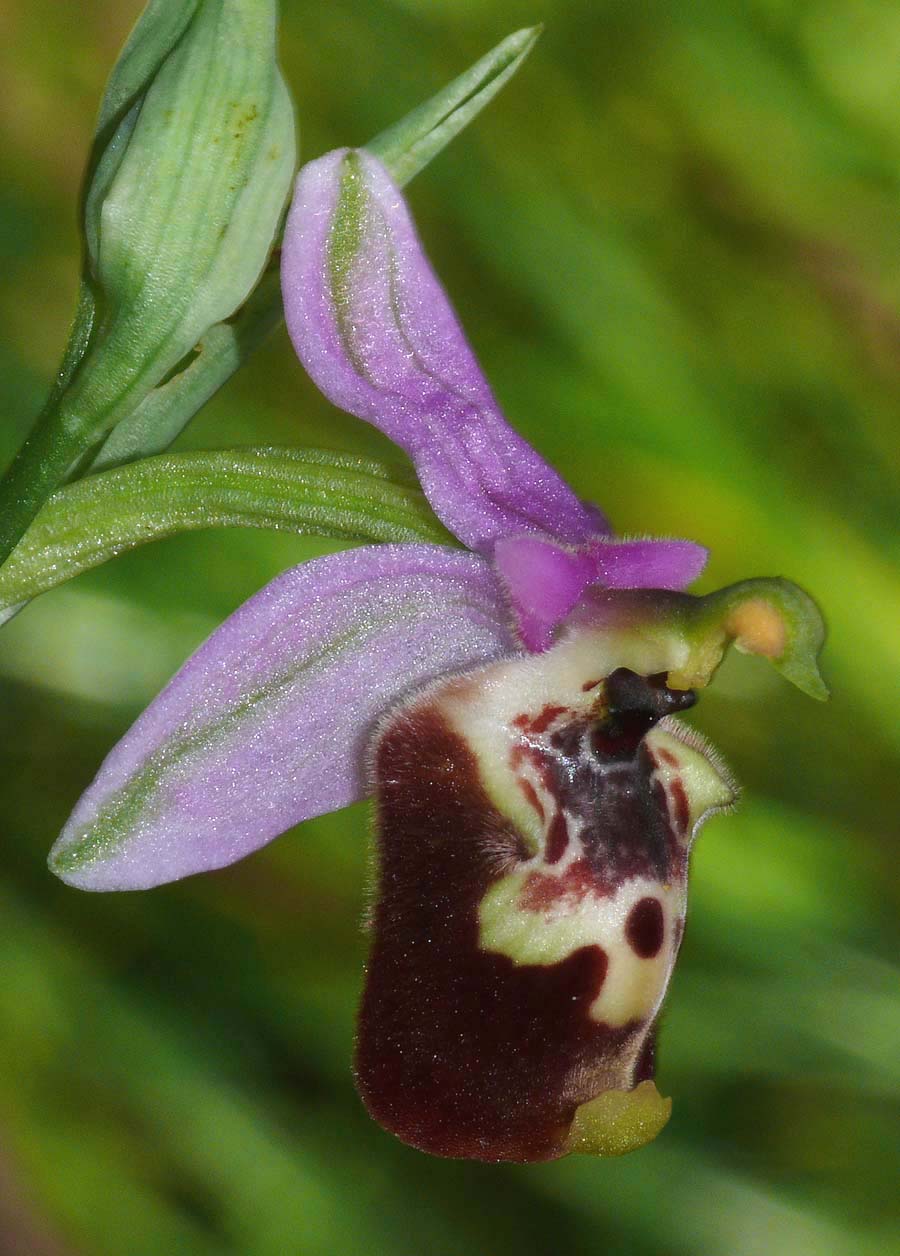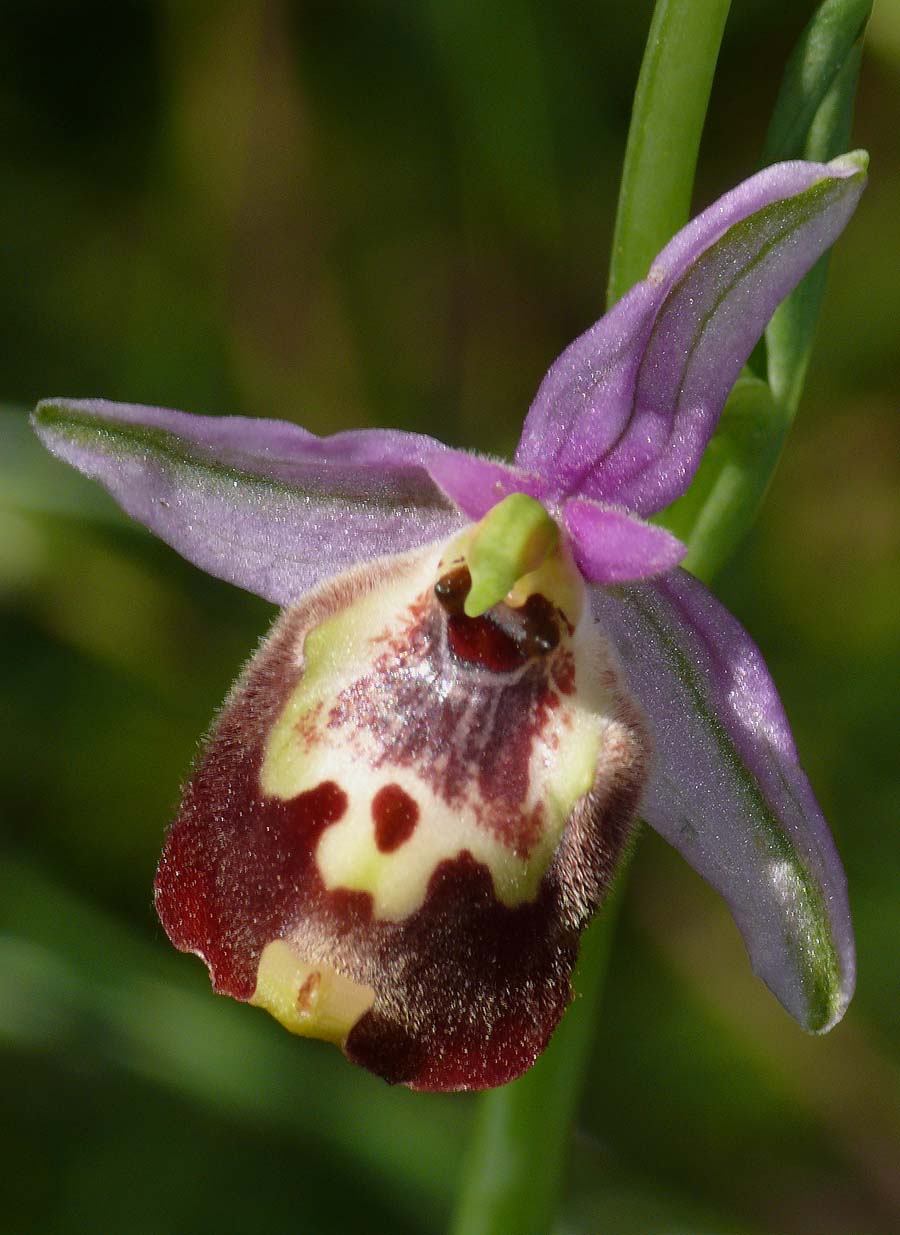O. graeca was first described from Lakonia in 2005 by Baumann and Baumann but was erroneously attributed to the O. fuciflora group of Ophrys and named O. holosericea subsp. graeca.
In 2017 however, Hertel and Weyland identified its pollinator and
published a paper in which the orchid was promoted to full species
status and more correctly placed it within the O. bornmuelleri group. It should be mentioned that despite the above,
some authorities prefer to consider the taxon as simply a late flowering and large flowered O. lacaena. There are valid reasons for this opinion as it is morphologically very similar and shares an extremely narrow range limited to the Lakonia region of
the Peloponnese and the coastal town of Gytheio in particular. Here it
is an orchid of shady oak woodland,
co-existing with similar O. bornmuelleri group members O. lacaena, O. candica and O. cytherea.
These species can sometimes be difficult to separate as perianth colouration, specular pattern and labellum shape are not reliable differentiators. O. graeca does however exhibit three features that help identify it. It is a later flowerer commencing some two weeks after both O. lacaena and O. candica, it is a larger flower and the appendage is wider and more prominent. These features can however be somewhat unreliable characteristics on which to reach a judgement and can really only be regarded as rough guides. For example, the lip length of O. lacaena is stated as being between 10 and 16 mm and O. graeca between 14 and 16 mm ? The illustrations depict plants that were just starting to flower in mid April and which were at the top end of typical lip length measurement. Sepal colouration is similar to that of O. lacaena but suffused with green and appendages generally broader. The photos must however be regarded as in all probability O. graeca but cannot be viewed as unqualified identifications. This uncertainty perhaps lends weight to the view of some that O. graeca is a later flowering O. lacaena.
These species can sometimes be difficult to separate as perianth colouration, specular pattern and labellum shape are not reliable differentiators. O. graeca does however exhibit three features that help identify it. It is a later flowerer commencing some two weeks after both O. lacaena and O. candica, it is a larger flower and the appendage is wider and more prominent. These features can however be somewhat unreliable characteristics on which to reach a judgement and can really only be regarded as rough guides. For example, the lip length of O. lacaena is stated as being between 10 and 16 mm and O. graeca between 14 and 16 mm ? The illustrations depict plants that were just starting to flower in mid April and which were at the top end of typical lip length measurement. Sepal colouration is similar to that of O. lacaena but suffused with green and appendages generally broader. The photos must however be regarded as in all probability O. graeca but cannot be viewed as unqualified identifications. This uncertainty perhaps lends weight to the view of some that O. graeca is a later flowering O. lacaena.
